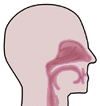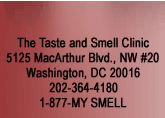  |
||
 |
September 2017Stem Cells in Taste and Smell FunctionStem cells play a role in development of many tissues including erythrocytes, leukocytes, hair cells and many other tissues. These cells are controlled by activities which initiate growth and development and inhibitors which inhibit growth and development of these tissues. Activators and inhibitors of these tissues differ for each cell type but they all display function in each tissue type. Some of these growth factors act intermittently and some are continually active. In hematological tissues these activators and inhibitors are continually active whereas in the hair follicle these growth factors and inhibitors appear to be more cyclic. Taste and smell receptors are dependent upon stem cell activation to initiate their growth and development as well as inhibitors which control their growth and development. Our work at The Taste and Smell Clinic in Washington, DC has uncovered the system for activation and inhibition of both taste and smell receptors. These factors are responsible for maintaining taste and smell function in most animal species including humans. In humans these factors are secreted in saliva for taste receptors and in nasal mucus for smell receptors. There are many of these factors which involve hormones, trace metals, vitamins and other chemical moieties. Among the most recent findings we have discovered that cAMP, cGMP and sonic hedgehog are critical to activate and stimulate taste and smell stem cells to induce growth and development of both taste and smell receptors whereas TNFalpha inhibits growth of these tissues. Previously we identified and isolated gustin or carbonic anhydrase VI as a growth factor in both taste and smell receptor function. Whereas in some tissues growth factors are secreted intermittently, in the taste and smell system, these moieties are secreted on a continuous basis since both taste and smell receptors turn over rapidly, commonly on a 24 hour basis. This rapid turnover makes the taste and smell systems very plastic in their function since their physical exposure to external factors make them amenable to injury. However, these stimulating and inhibiting moieties exhibit an equilibrium, as in many tissues, with activation and inhibition of growth carefully controlled. Inhibition of these growth factors and activation of these inhibitory factors lead to loss of taste and smell function. Methods to increase secretion of these growth factors or inhibition of these inhibiting factors are responsible for correction of many of the pathological features which inhibit taste and smell function. Age is one component which inhibits secretion of these chemical moieties as well as many other physiological and pathological phenomena. It has been the function of our work at The Taste and Smell Clinic to identify and characterize these moieties and how they function in order to restore taste and smell function in the many patients who lose these sensory modalities. References
|
|